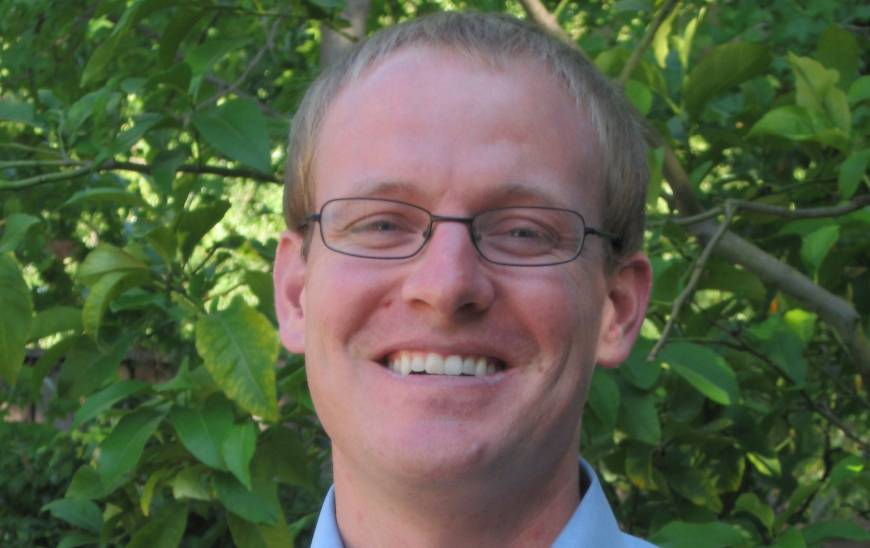The Stanford School of Earth, Energy & Environmental Sciences is now part of the Stanford Doerr School of Sustainability.
This page is currently being maintained for archival purposes only. For the latest information, please visit us here.
From well to wheel—the full lifecycle effect of carbon-based fuels
"A massive economic force is pushing us toward fossil energy sources that are harder to get."

Adam Brandt
Pressing for a low carbon future
by Heather Rock Woods for the Earth Scientist, Fall 2012
In most ways, Adam Brandt’s work life has stayed the same despite happy upheavals last July: first baby, moving offices, and being promoted to tenure-track assistant professor of energy resources engineering in the School of Earth Sciences.
He’s still teaching classes, writing papers, and meeting with students and postdocs. And he’s still absorbed in measuring and mitigating carbon-intensive sources of fuel.
Carbon-dioxide-emitting fossil fuels are an inescapable source of energy for the next few decades, even as solar and wind power grow. Furthermore, oil rarely bubbles out of the ground anymore without extensive intervention.
“A massive economic force is pushing us toward fossil energy sources that are harder to get: the oil sands in Canada, one-mile-deep offshore oil drilling in the Gulf of Mexico, exploration in Arctic waters.”
These methods often let loose more carbon dioxide than conventional oil drilling because they require more energy to obtain the fuels.
To determine the full effect, Brandt factors in the entire lifecycle—from “well to wheel”—including the energy put into extracting, refining, and transporting the fuel to a gas station near you. His calculations show that oil from the oil sands mines, for example, releases on average 20 percent more carbon dioxide than conventional oil.
Those averages are important, but carbon-intensity can vary from well to well, and mine to mine. For instance, many California oil fields use steam injection to get heavy oil out; the energy to boil water into steam adds to total carbon emissions for each gallon of oil produced.
“Flaring, steam injection and intense methods to remove scarce oil are three conditions that can push you into the 20 percent range,” Brandt said.
To account for individual differences, Brandt and postdoctoral researcher Hassan El-Houjeri have spent the last year developing a tool that allows direct comparison of carbon intensity for different oil field production practices. It’s ready for use with California’s Low Carbon Fuel Standard, which calls for a 10 percent reduction in carbon dioxide per unit of fuel over 10 years.
“We’re finalizing the OPGEE tool for regulatory use. It’s open source and very transparent, so people can understand the calculations..” Brandt said. “To meet the 10 percent reduction target, California companies will be able to look at the numbers when choosing components of their energy portfolio.”



